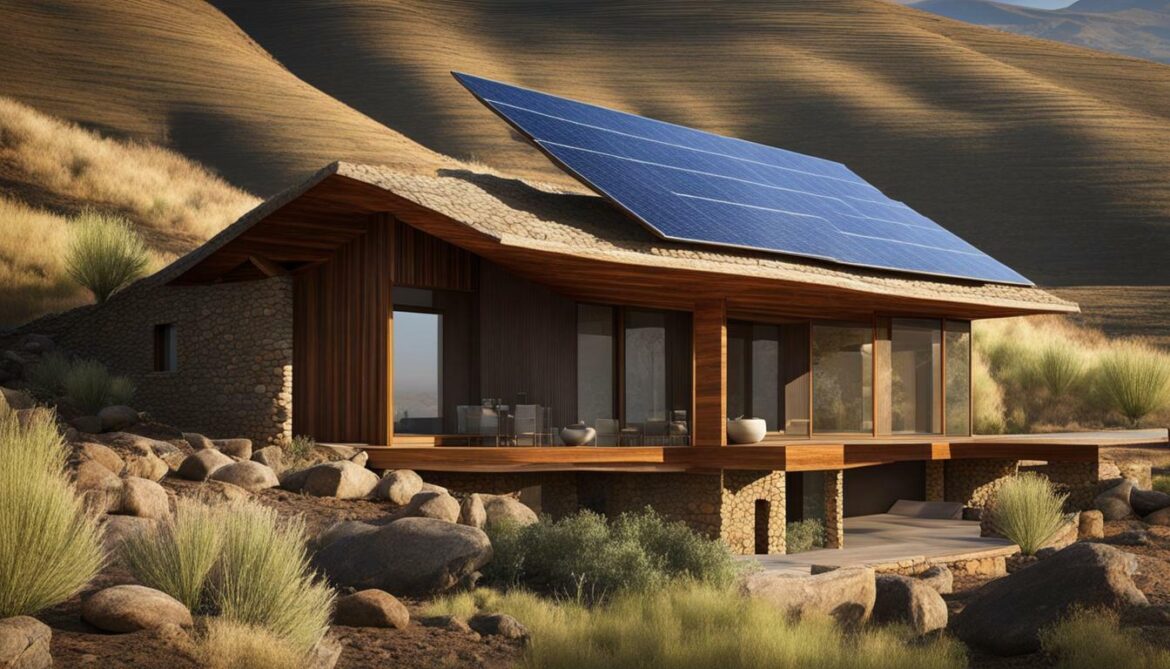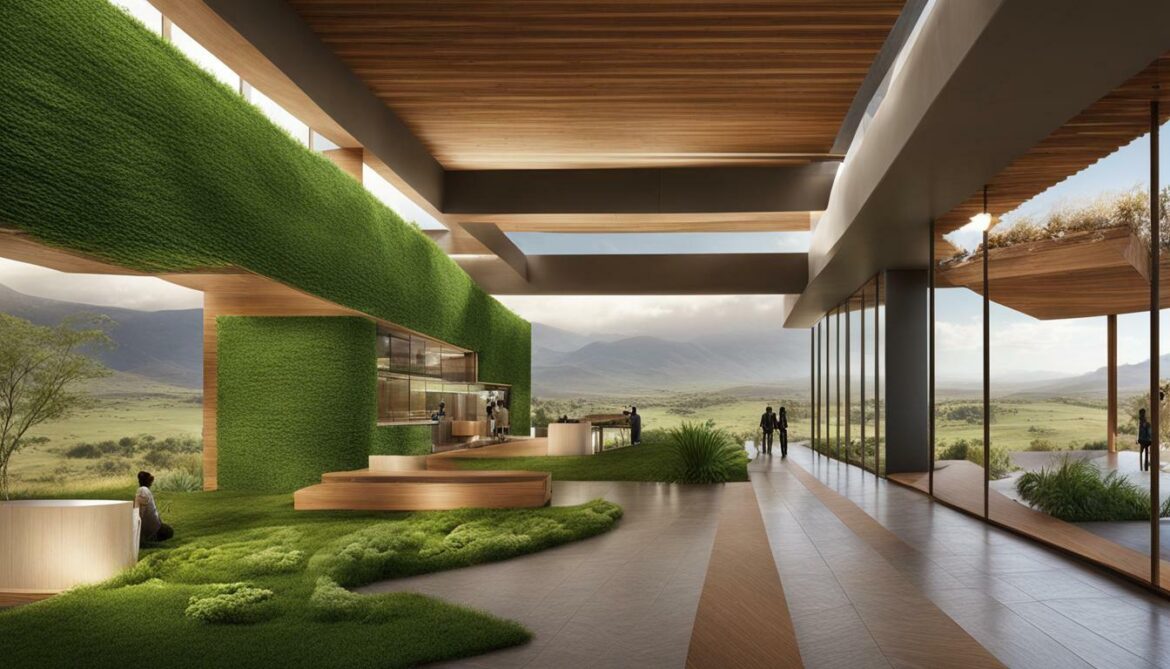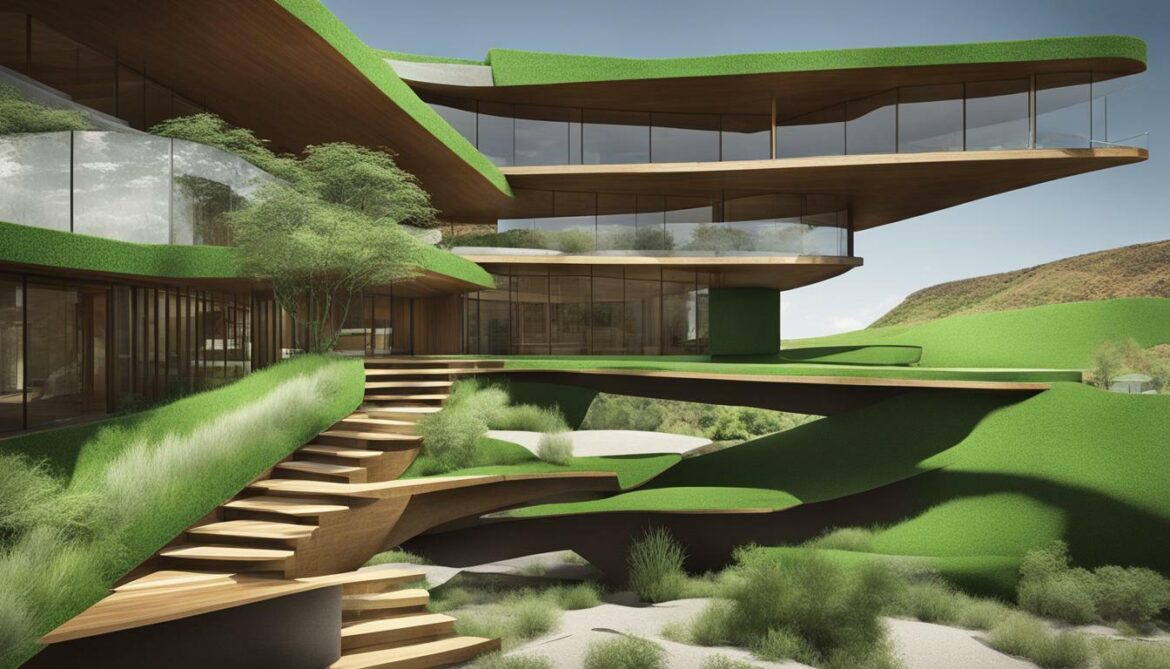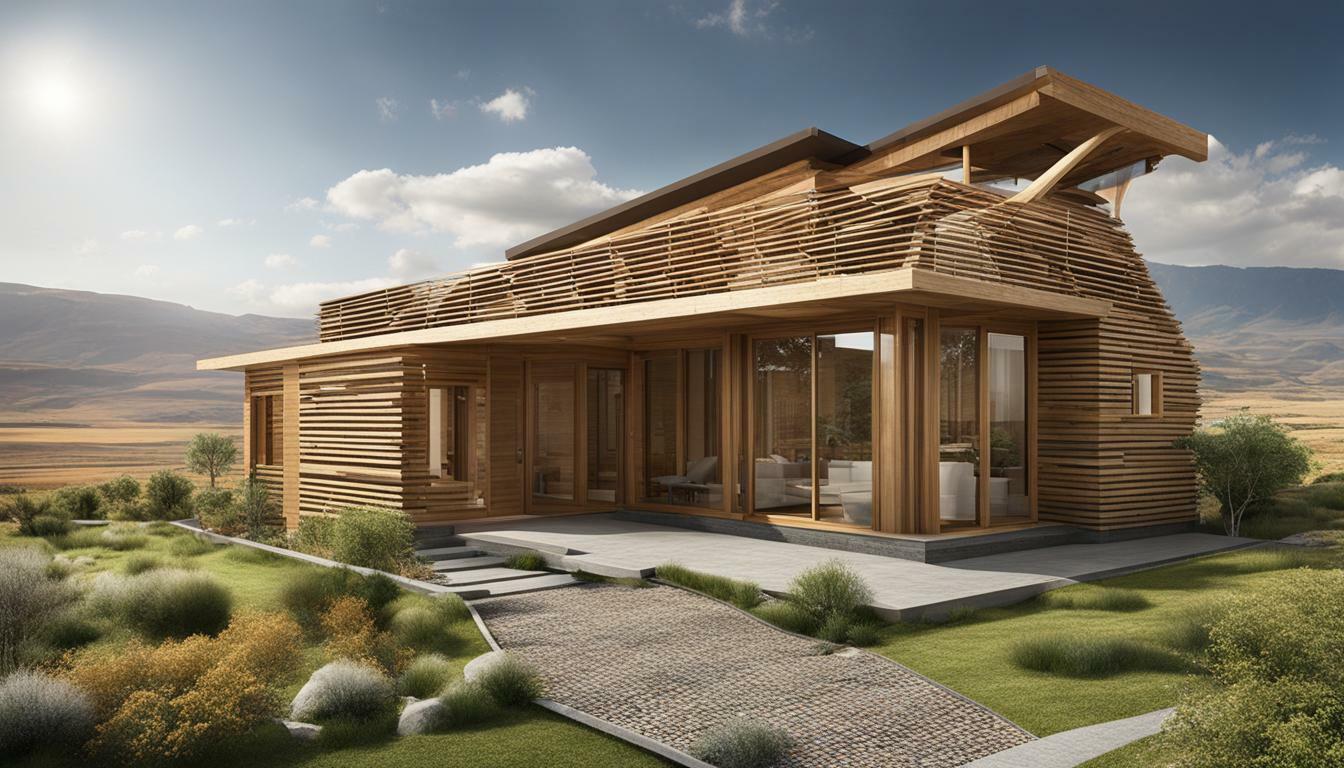Lesotho has a rich history of embracing green building practices in its architectural development, with a focus on sustainable architecture and eco-friendly construction methods. The country has been exploring innovative technologies to address the challenges of heating and cooling in a climate that experiences freezing temperatures in winter.
In 2015, a demonstration home was built in Lesotho, showcasing the potential of green building. The home is designed to be warm in winter and cool in summer without relying on fossil fuels or electric heating. Key features of the home include insulation, non-fossil fuel-based heat sources, thermal mass in the floors and walls, solar PV as the primary electric source, recycled waste insulation, rainwater harvesting, and the training of local workers.
The goal of green building in Lesotho is to provide affordable, high-performance buildings that reduce greenhouse gas emissions and can be replicated to address the housing needs of the poor and marginalized population. Furthermore, the adoption of green building technologies can create employment opportunities in a country with high unemployment rates.
Architects, engineers, and contractors in Lesotho need workshops, training centers, and education to promote the adoption of green building technologies. The potential impact of these technologies is significant, as an estimated 200 million households worldwide could benefit from such solutions to reduce their carbon footprint.
Lesotho’s current energy sector relies on a mix of hydropower, imports, and biomass, with electricity access rates below 50%. The unsustainable use of biomass poses challenges in terms of deforestation and indoor air pollution. Addressing these challenges requires enhancing electricity access and production, particularly in rural areas.
Green building research in Africa is still limited but advancing, with a focus on environmental factors. Future research should also explore the social and economic aspects of green building adoption and implementation. The Sisters of Charity of Ottawa in Lesotho have shown interest in adopting the building technology for their projects, further emphasizing the potential of green building in the country.
Key Takeaways:
- Lesotho has a rich history of embracing green building practices.
- The country has been exploring innovative technologies to address heating and cooling challenges.
- The goal of green building in Lesotho is to provide affordable, high-performance buildings that reduce greenhouse gas emissions.
- The adoption of green building technologies can create employment opportunities in Lesotho.
- Future research should explore the social and economic aspects of green building adoption and implementation.
Over the years, Lesotho has witnessed a significant evolution in its approach to green building, with a growing emphasis on environmental design and the implementation of eco-friendly building methods. The country has recognized the need to address the challenges of heating and cooling in an environment that experiences freezing temperatures during winter. To tackle this issue, Lesotho has been exploring green building technologies that provide sustainable solutions.
In 2015, a demonstration home was built in Lesotho to showcase the potential of green building. This home is designed to be warm in winter and cool in summer without relying on fossil fuels or electric heating. It incorporates key characteristics such as insulation, non-fossil fuel-based heat sources, thermal mass in the floors and walls, solar PV as the primary electric source, recycled waste insulation, rainwater harvesting, and training of local workers.
The goal of these green building initiatives is to create affordable, high-performance buildings that reduce greenhouse gas emissions and can be replicated to address the housing needs of the poor and marginalized population in Lesotho. Additionally, the adoption of green building technologies can also create employment opportunities in a country with high unemployment rates. The Sisters of Charity of Ottawa in Lesotho have shown interest in adopting these technologies for their projects, and it is estimated that around 200 million households worldwide could benefit from such solutions to reduce their carbon footprint.
However, there are challenges that need to be addressed. Currently, the energy sector in Lesotho relies on a mix of hydropower, imports, and biomass, with electricity access rates below 50%. The unsustainable use of biomass poses challenges in terms of deforestation and indoor air pollution. To overcome these challenges, there is a need to enhance electricity access and production, particularly in rural areas, and promote the adoption of greener building practices.
| Benefits of Green Building Initiatives in Lesotho |
| Reduces greenhouse gas emissions |
| Provides affordable, high-performance buildings |
| Creates employment opportunities |
| Addresses the housing needs of the poor and marginalized |
| Reduces reliance on fossil fuels |
| Improves indoor air quality |
Research in green building practices in Africa is still limited but progressing, with a focus on environmental factors. However, future research should also explore the social and economic aspects of green building adoption and implementation. Workshops, training centers, and education of architects, engineers, and contractors are crucial in promoting the adoption of green building technologies in Lesotho.

“The future of green building in Lesotho holds great potential for sustainable development and addressing environmental challenges. With continued efforts in promoting eco-friendly construction practices, we can create a greener and more sustainable future for all.” – Green Building Expert
Notable Green Building Projects in Lesotho
Lesotho’s green building movement has seen the construction of several notable projects that stand as symbols of the country’s dedication to sustainable development. These projects showcase the innovative use of green building technologies and highlight Lesotho’s commitment to reducing its carbon footprint.
One such project is the demonstration home built in Lesotho in 2015. This home serves as a model for sustainable architecture in the country, addressing the challenges of heating and cooling in a region that experiences freezing temperatures in winter. The home’s key characteristics include insulation, non-fossil fuel-based heat sources, thermal mass in the floors and walls, solar PV as the primary electric source, recycled waste insulation, and rainwater harvesting. The home’s design ensures warmth in winter and coolness in summer without relying on fossil fuels or electric heating.

An organization that has shown interest in adopting this green building technology is the Sisters of Charity of Ottawa in Lesotho. Their commitment to sustainable development aligns with the goals of the green building movement in Lesotho. By replicating these sustainable building practices in their projects, the Sisters of Charity aim to provide affordable, high-performance buildings that reduce greenhouse gas emissions and address the housing needs of the poor and marginalized population.
It is estimated that around 200 million households worldwide could benefit from adopting similar green building solutions to reduce their carbon footprint. In addition to environmental benefits, the use of green building technologies can also create employment opportunities in Lesotho, a country with high unemployment rates. To fully realize the potential of green building in Lesotho, there is a need for workshops, training centers, and education programs to equip architects, engineers, and contractors with the necessary skills and knowledge.
Table: Notable Green Building Projects in Lesotho
| Project |
Location |
Description |
| Lesotho Demonstration Home |
Lesotho |
A model for sustainable architecture with insulation, non-fossil fuel-based heat sources, and solar PV as the primary electric source. |
| The Sisters of Charity Project |
Lesotho |
Adoption of green building technology in projects aimed at providing affordable, high-performance buildings to address housing needs. |
Challenges and Opportunities in Green Building
While Lesotho has made significant strides in green building, it also faces challenges and opportunities that shape its path towards a sustainable future. One of the key challenges is the need for further green building research in the country. Currently, green building research in Lesotho is limited but advancing, with a focus on environmental factors. However, future research should also explore the social and economic aspects of green building adoption and implementation. This holistic approach will help policymakers and stakeholders make informed decisions and develop effective strategies to promote sustainable development.
In addition to research, Lesotho also faces challenges in terms of sustainable development. The country’s current energy sector relies on a mix of hydropower, imports, and biomass, with electricity access rates below 50%. The unsustainable use of biomass poses challenges in terms of deforestation and indoor air pollution. To address these challenges, there is a need to enhance electricity access and production, particularly in rural areas. Green building technologies can play a crucial role in this by promoting energy-efficient solutions and reducing reliance on fossil fuels.
Green building technologies can provide affordable, high-performance buildings that reduce greenhouse gas emissions and can be replicated to address the housing needs of the poor and marginalized population.
Despite these challenges, Lesotho also has opportunities to further advance its green building efforts. The adoption of green building technologies can create employment opportunities in a country with high unemployment rates. The training of local workers in sustainable construction practices can not only enhance their skills but also contribute to the overall economic development of the country. Additionally, Lesotho has seen interest from organizations like the Sisters of Charity of Ottawa in adopting green building technologies for their projects. Such collaborations and partnerships can drive innovation and knowledge-sharing in the green building sector.
In conclusion, Lesotho’s green building journey is filled with challenges and opportunities. By investing in research, promoting sustainable development, and seizing the opportunities for collaboration, Lesotho can continue to make progress towards a more sustainable and environmentally conscious future.

- Lesotho Ministry of Energy and Meteorology. (2018). Lesotho Renewable Energy and Electricity Access Project. Retrieved from [insert URL]
- International Finance Corporation. (2018). Lesotho: Green Building in Emerging Markets. Retrieved from [insert URL]
- United Nations Development Programme. (2020). Sustainable Development in Lesotho: Challenges and Opportunities. Retrieved from [insert URL]
The Future of Green Building in Lesotho
The future of green building in Lesotho holds immense promise, with sustainable development playing a key role in shaping the country’s architectural landscape. Lesotho, a country that experiences freezing temperatures in winter, has been exploring green building technologies to address the challenges of heating and cooling. One notable achievement is the construction of a demonstration home in 2015 that provides warmth in winter and coolness in summer without relying on fossil fuels or electric heating.
This innovative home showcases key characteristics such as insulation, non-fossil fuel-based heat sources, thermal mass in floors and walls, solar PV as the primary electric source, recycled waste insulation, and rainwater harvesting. It not only reduces greenhouse gas emissions but also aims to be affordable and replicable, addressing the housing needs of the poor and marginalized population.
To fully realize the potential of green building, workshops, training centers, and education initiatives are crucial for architects, engineers, and contractors. By promoting the adoption of green building technologies, Lesotho can create employment opportunities and contribute to sustainable development in a country with high unemployment rates.
The interest shown by the Sisters of Charity of Ottawa in adopting these building technologies for their projects demonstrates the broader impact of sustainable architecture. It is estimated that around 200 million households worldwide could benefit from such solutions, helping them reduce their carbon footprint and improve living conditions.
While Lesotho’s current energy sector relies on a mix of hydropower, imports, and biomass, there is a need to enhance electricity access and production, especially in rural areas. This will not only address the challenges posed by unsustainable biomass use but also contribute to the overall green building movement.
As green building research in Africa continues to advance, future studies should encompass not only environmental factors but also the social and economic aspects of adopting and implementing sustainable construction practices. By focusing on these areas, Lesotho can pave the way for a greener and more sustainable future.
FAQ
What is green building?
Green building refers to the practice of designing, constructing, and operating buildings in an environmentally sustainable way, using methods that minimize the negative impact on the environment and promote resource efficiency.
What are the key characteristics of a green building?
Key characteristics of a green building include insulation, non-fossil fuel-based heat sources, thermal mass in the floors and walls, solar PV as the primary electric source, recycled waste insulation, rainwater harvesting, and training of local workers.
Why is green building important in Lesotho?
Green building is important in Lesotho to address the challenges of heating and cooling in a country that experiences freezing temperatures in winter. It also helps reduce greenhouse gas emissions, provide affordable housing, and create employment opportunities.
Who is interested in adopting green building technology in Lesotho?
The Sisters of Charity of Ottawa in Lesotho have shown interest in adopting green building technology for their projects. Additionally, around 200 million households worldwide could benefit from such solutions to reduce their carbon footprint.
What are the challenges of green building in Lesotho?
Challenges of green building in Lesotho include limited green building research, the need for workshops and training centers, and the need to enhance electricity access and production, particularly in rural areas.
What is the future of green building in Lesotho?
The future of green building in Lesotho holds promising prospects. Continued efforts in promoting sustainable development and eco-friendly construction practices can lead to further advancements in green building technology and its adoption throughout the country.
Source Links





















Post comments (0)